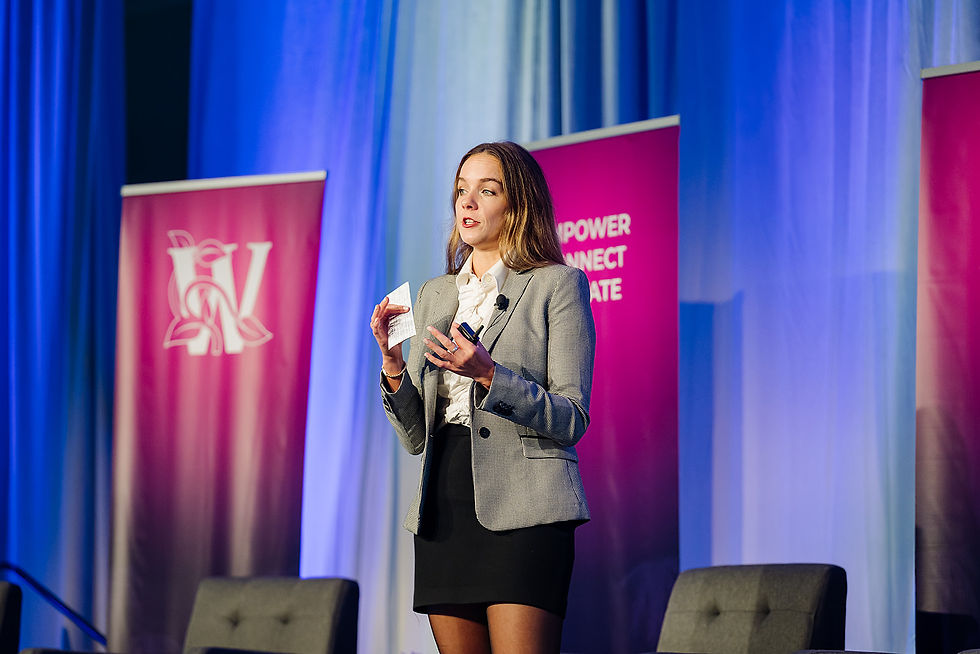WIAS25 Takeaways: Ag Disruption to Ag Promise
- Michelle Pelletier Marshall
- Sep 30
- 4 min read
By Michelle Pelletier Marshall, Women in Agribusiness Media (September 30, 2025)

Seven hundred women, 60+ speakers, 20+ sessions, 25+ dedicated networking hours and a whole lot of energy and inspiration – that is the annual Women in Agribusiness Summit. And this year, last week in Orlando, Florida, to be exact, was no different. With a diverse audience – one that represented 39 U.S. states and D.C., as well as 8 countries such as Brazil, Mexico, the UK and The Netherlands – and women representing roles across the ag value chain from CEO to middle management to those just finding their place in ag, this 14th annual event offered something for everyone.
What did you miss? Our attendees can tell you (or check out the press hits about the event here):
“Best presentation on this topic that I’ve seen.”
-- Seleise Barrett, Kansas State University commenting on the “Impact of Customer Trends and Food Preference on Ag Markets” presentation by Xiannan Li, senior analyst with RaboResearch.
“Great job, engaging and representing diversity in WIA.”
-- Cara Kalercara of Simplot remarking on the “Global Ag Market: Where We Are & What's Ahead for 2025/26” keynote presentation by Emily French, CEO of Global Ag Protein.
“Loved the conversation and decision-making tool provided. True amazing takeaway from this conference.”
-- Jennifer Williams, Smithfield, speaking about the Networking Breakout: “The Four Tensions Shaping the Food and Agribusiness Value Chain” with Polly Ruhland and Lauren Chupp, senior managing directors with FTI Consulting.
“The session covered the what, why it matters, and how to use the information to grow.”
-- LaTonya Keaton of CoBank, noting her thoughts on “Leading Change: Essential Skills for Current and Future Agribusiness Leaders” with Jacqueline Langlois, CEO of Gen D Consulting.
The Summit focused on how 2025 reveals agriculture in the U.S. at a crossroads, yet remaining strong and committed to opportunities, solutions and diversification, particularly during this harvest season which is experiencing, for example, farmers harvesting more acres of corn than they have since 1933, with surplus expected to be at record levels.

Yet due to changing economics, including trade disputes and changing tariffs, crop prices are falling and input costs are rising, resulting in net farm income for 2025 forecast at $179.8 billion for calendar year 2025, according to the USDA, which is up from 2024 but is largely driven by a significant rise in direct government payments. Net farm income last peaked in 2022 at $181.9 billion.

There is a grain glut as well, which keynote speakers Karen Braun, chief market analyst for Zaner Ag Hedge, and Emily French, CEO of Global Ag Protein, explained. Additionally the alarm was sounded that China, the world’s largest soybean importer which usually accounts for an average of 60 percent of total U.S. soybean exports, has zero new crop export orders for U.S. soybeans on the books for this year. Farmers are calling on the U.S. administration to make an immediate trade deal to address this.
WIA experts also discussed this on the “Market Access & Trade Policy Panel: What Agribusinesses Need to Know Now and Next” with:

Sara Wyant, Founder and Publisher, Agri-Pulse
Sérgio Bortolozzo, President, Brazilian Rural Society
Alejandra Castillo, President & CEO, North American Export Grain Association (NAEGA)
Virginia Houston, Director of Government Affairs, American Soybean Association
Gretchen Kuck, Economist, National Corn Growers Association

Other speakers, like Maria McWhorter, executive director, North America, Agriculture, Kynetec, responded to questions about how farmers are adapting…
“It is tough to diversify in some markets [like in corn and cattle]… but definitely feeling like farmers are more open-minded on how the long-term viability of their farm will look. Different roles within the farm, potentially integrating or developing different businesses that serve their farms. They are still in it for the long run but open to different ways of succession planning and diversification on the farm.”
And combating higher input costs…
“Higher input costs are definitely impacting the bottom line so farmers are looking for partnerships with retail and manufacturers that allow them to be more flexible with their purchases.”
And the bright spot?
“The hope for the future is to have a better understanding of things like bio stimulants and some of the different products that can help better utilize fertilizer… and optimism about regulation of these products to bring clarity and confidence to using them.”
Attendees also gathered insight on supply chain management, trends in ag investing and AI’s place in agri-marketing solutions, as well as tips on mastering leadership, “dialing in” to generational voices in the workplace and tuning in to candid stories and practical insights from female leaders’ journeys to the C-suite.
AT WIA 2025, we also:



Enjoyed getting to know one another at the off-site reception:


And much more....


To learn more about WIA Summit 2025, look to the full agenda here or reach out to WIA at info@womeninag.com with any questions.





